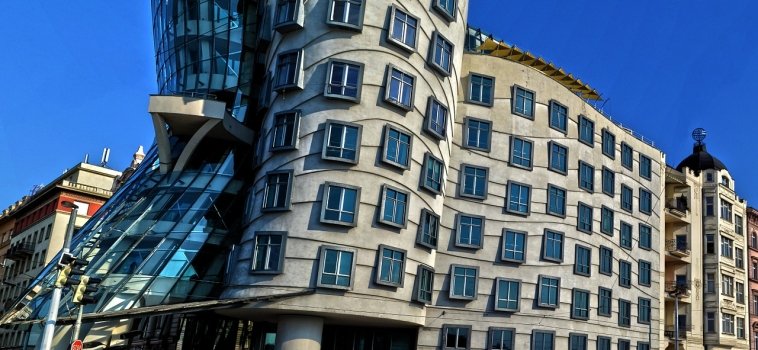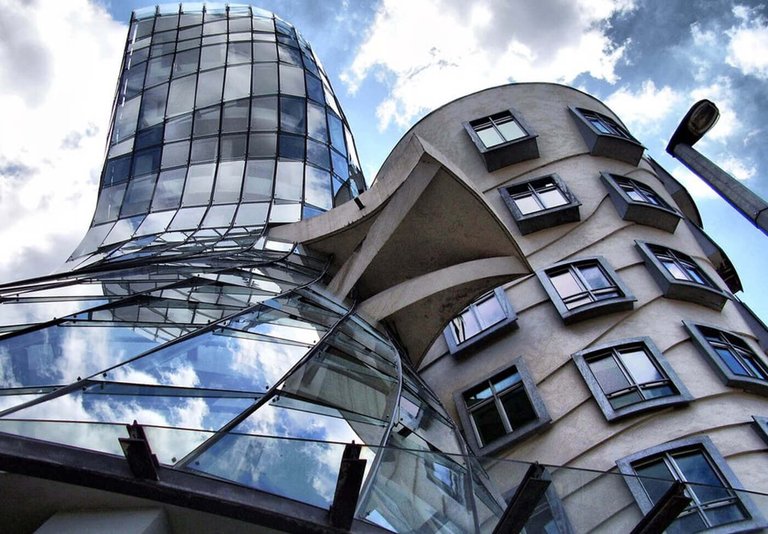The Dancing House, or Fred and Ginger, as it is known by locals, is the nick name given to the Nationale-Nsad Museum in Prague, the former designation of a nineteenth-century carriage house. Designed by the influential American architect Vlado Milunciic, it was constructed in collaboration with Canadian-American architectural architect Frank Gehry along an empty riverfront area. In this former carriage house, the architect designed two pavilions that were to be used by the Czech Republic's first President, dissertations by the Czech Republic's communist regime and the United States' post-war occupation of Prague. The Dancing House was completed in time for the Prague Spring Festival in 1963. It can still be visited today.
The design of the Dancing House was conceived by architects who were influenced by earlier pavilion-type buildings, especially those constructed in the French Revolution by Girondins du Seychelles. The goal of such architecture was to create a dynamic public space that would encourage people to engage in public discussions and political demonstrations. Milunciic, the original architect of the building, included an underground complex of passageways, stairways and rooms that are separated by large stone chambers and covered by a huge portico.
The Dancing House is located on a promenade in the Old Town of Prague. The large portico was designed to separate the citizens of Prague from the public square where the famous St. Vitus Cathedral is located. This building served as the headquarters for the Central Committee of the Prague Spring Festival (St. Vitus ovony) and the Central Committee of the Republic of Czechoslo CIS. The original architects left the portico intact and it can still be seen today as the venue for one of the most popular and lively public gatherings in Prague.
The dancing house was made of wood with a concrete roof and was completed in 1960. It stood on the Plaza Mayor or main square of Prague. The building was built with an unusual shape that made it stand out from the other buildings in the area. It stands on four concrete panels that were each attached to four posts. It had an open doorway in the unusual shape of a pointed bow.
The architecture of the Dancing House includes several characteristics of earlier French pavilions, especially the kind that dominated the Seine River. The layout of the buildings included a series of small alleys on the river bank that connected the various pavilions. These alleys had small doorways that lead to the central chamber where the meeting took place.
The ceiling of the dancing hall was made of marble stained glass that gave the building the appearance of a floating city. At the entrance there was a small port that could be used to allow water vessels to enter the building. On the first floor there was a long lobby where people could enter to attend the meetings or for the performers who entertained guests.
The dancing house is located on Hlavnica street and has become a tourist attraction. It attracts a large number of tourists who come to see the historical architecture and the many different shows that are put on in the building. The original design of the building included a spiral staircase that led to a large round table where the dignitaries of the Czech national bank sat. The building also contained offices for the bankers and employees. These offices were designed in an original style and the walls were painted in a bright red and cream color.
The Dancing House is now open to the public for visitors who can observe the original architectural features. One of the most striking features of the building is the spiral staircase that leads to the large round table. The circular table is embellished with a huge crystal top which is visible from the staircase. The original building has been completely renovated and the architecture has been totally refurbished. The interior architecture has been completely re-designed and the entire building looks as if it was built in the seventeenth century.




Thank you very much for this brilliantly written article and for the great informations that you have shared on the Dancing House, one of my most favourite architectural structures in Prague, Czech Republic! All the best and keep up the good work! :)
Thank you 🙂
Gladly! You're most welcome! :)